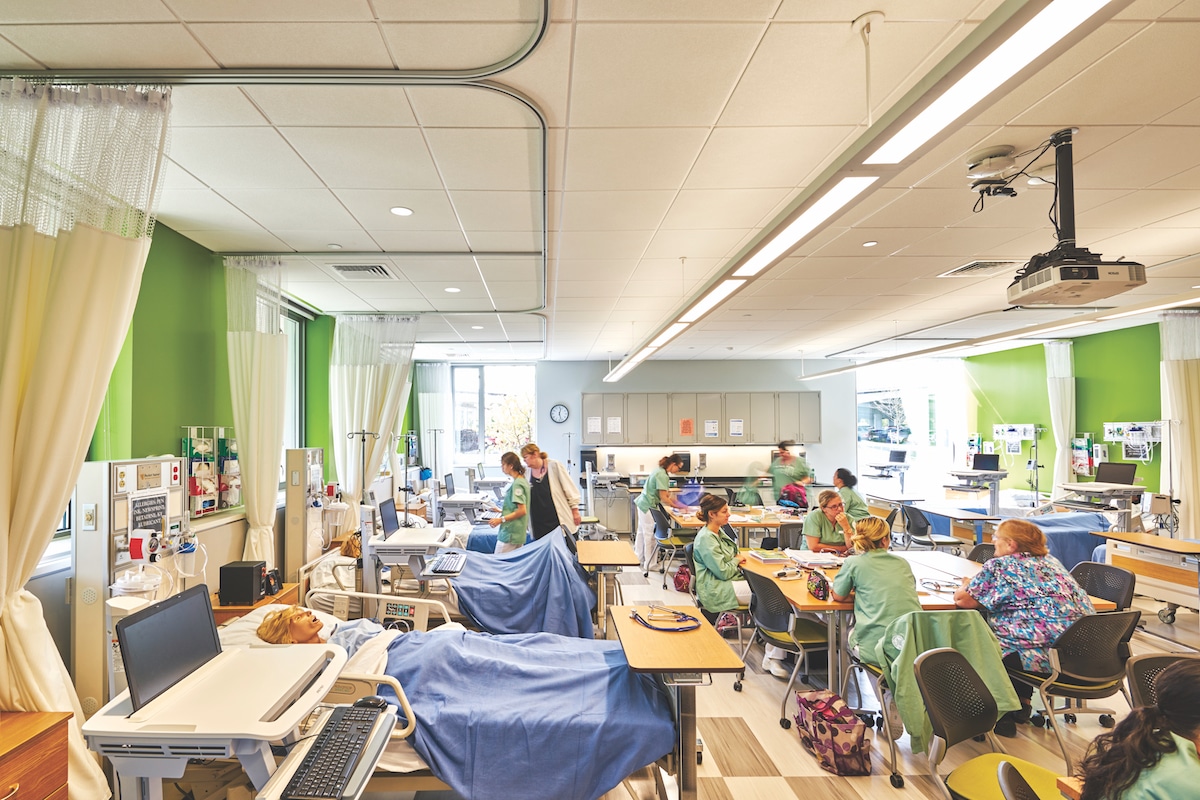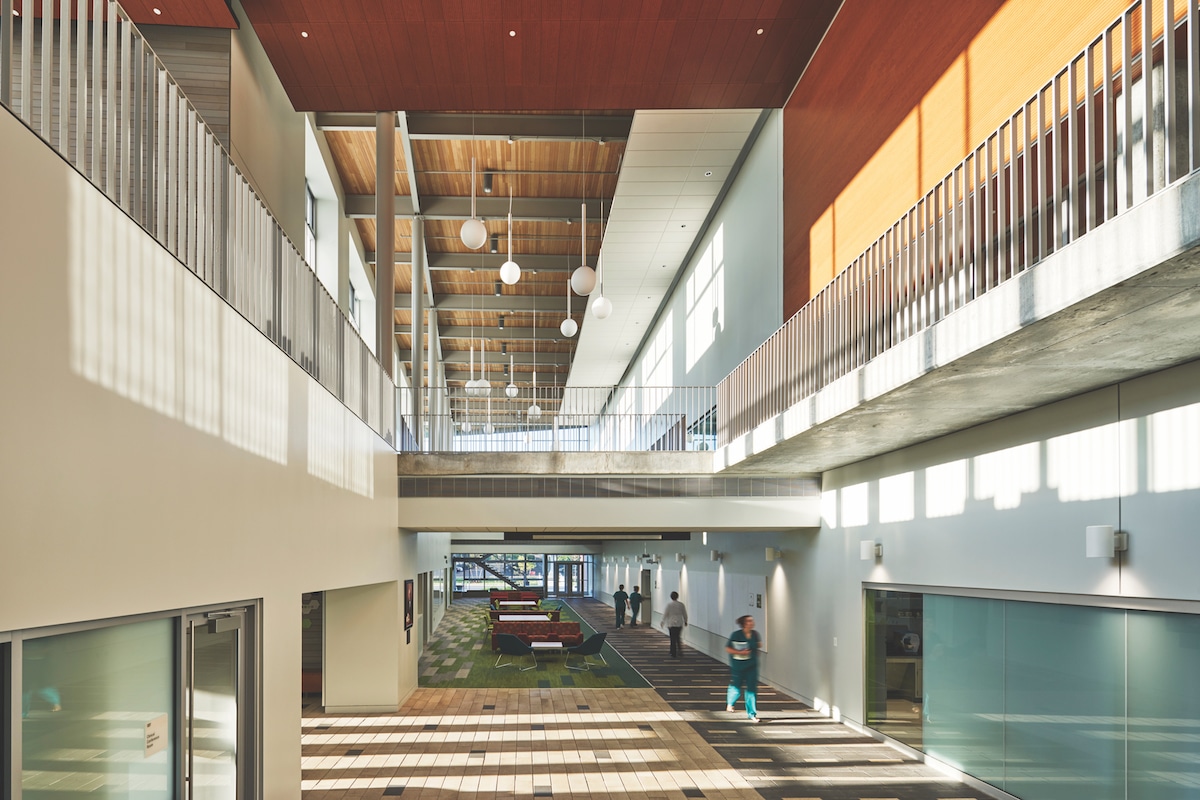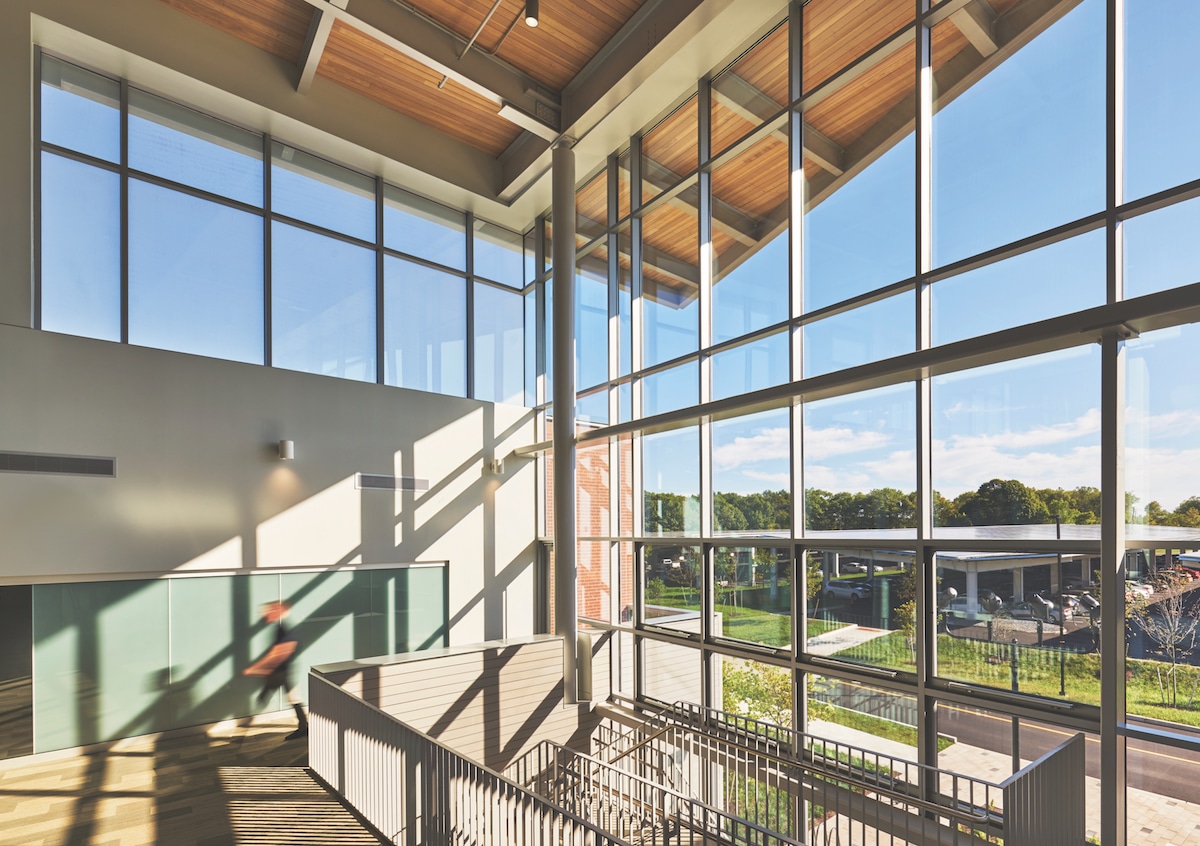
Reduced plug loads, a wider indoor temperature range, enthalpy wheel heat recovery, and filtered fume hoods are among the green building features in this health and science center. [Photo: Edward Caruso]
When the team at the Watertown, Massachusetts–based architecture firm Sasaki set to work on the John J. Sbrega Health and Science Building at Bristol Community College, they faced one enormous challenge: Use no more energy each year than the amount of renewable energy that is produced onsite.
Bristol Community College is working to achieve carbon neutrality by 2050 and was committed to achieving zero net energy in this new building, using a new 3.2-megawatt solar array built over a parking lot to supply renewable energy for the campus. The challenge was to design an energy-efficient structure that could accommodate the energy-dense uses of a training facility for medical professionals—including high plug loads for medical equipment, specialized ventilation, and lighting requirements—and stand up to the chill of Massachusetts winters.

[Photo: Edward Caruso]
To do that, the team relied on a slate of technological solutions and green building strategies, including dramatically reduced lighting and plug loads, a wider indoor temperature range, enthalpy wheel heat recovery, which harnesses heat from the building’s ventilation system, and filtered fume hoods. Those energy-efficient filtered fume hoods, which filter chemical fumes in a self-contained system, were a huge energy-saver for the building, which has many labs in need of fume hoods.
But as a relatively new piece of technology, they can also be controversial, and the team had to work hard on educating officials at the college about their benefits. “I’ve had people ask me why the chemistry building is the place to reduce energy, when safety is paramount,” says Thomas Simister, a senior associate at Sasaki. “I would completely agree with that, but also say that unless we push ourselves technologically and behaviorally, we’re not going to make a dent in our energy consumption overall. There are ways to reduce energy smartly, even in science buildings like these.”

[Photo: Edward Caruso]

[Photo: Edward Caruso]
The team also worked carefully to design a high-performance envelope and then—critically—went to great lengths to ensure that it would be built to perform in the real world. “We spent a lot of time detailing all of the transitions around windows and doors and openings in the exterior to make sure the membrane is tight, so there’s not a lot of air leakage,” says Fiske Crowell, principal at Sasaki. “But it doesn’t matter what we detail if the contractor doesn’t build it correctly.” During construction the team ordered a blower door test—essentially having the contractor put a big fan in the doorway to test for air leakage. As a result of those efforts, the house is practically airtight—and that’s in the real world, not just on paper.
The team also got creative with natural daylight, carefully calibrating the orientation of the building for maximal light and solar heat gain. With a large wall of windows, the central concourse is bright and airy, and many of the internal walls are transparent, allowing light to filter into the back of the building to reduce reliance on artificial lighting. The building also uses a natural ventilation system, with red and green lights indicating whether it’s appropriate for the occupants to open a door or window. As a result of all these measures, the building uses no fossil fuels for heating and cooling, and is projected to use less than 20% of the solar array at Bristol Community College, paving the way for the entire campus to reach carbon neutrality.

[Photo: Edward Caruso]

